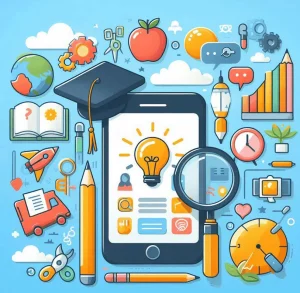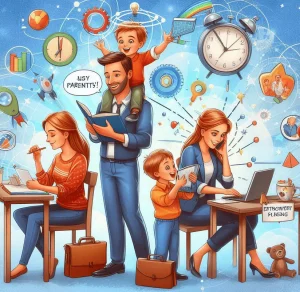Do we really believe that every child can succeed? How does the view that a child’s potential is limited affect our ability to reach that child and inhibit his growth and academic success? The largely unexplored, and in some cases erroneous, beliefs held by many mainstream educators have resulted in ineffective and even damaging educational practice. The way we view students and learning affects what we teach, how we teach, and ultimately, student learning. Some teachers design curricula as if diversity didn’t exist; they ignore or are unaware of how their students’ backgrounds or contexts shape their learning styles and affect their achievement.
We prefers observation over research’s traditional pre- and post-testing and surveys as the best means of gathering information about people. Observation allows one to discern the number and types of variables that impact learning in a particular context. For example, observation of infants and small children has shown they are capable of processing information at a much more complex and abstract level than other forms of research previously had shown them to be.
A second erroneous belief held by many educators is that intelligence is a definable, measurable, static entity. First, not even psychometric experts themselves can agree on a common definition or theory of intelligence. Neither the instruments nor quantification procedures used by IQ psychometrists could produce accurate, scientific results.
Moreover, the mental measurement of intelligence is in no way a prerequisite for present success in school. No body of data shows that any use of traditional IQ or mental measurement is tied to valid teaching and learning. Therefore, IQ measurement is a professionally meaningless ritual, a ritual with unnecessarily harmful consequences, that saps professional thought and action in a negative way, causing professionals to overlook successful strategies and approaches in education. It is a ritual that shapes student self-image in a negative way.
Some educators make the mistake of thinking intelligence is a fixed, unchangeable entity. This viewpoint is based on the belief that one’s IQ is some fixed quantity that cannot grow. Those who hold this erroneous belief take no time to nurture the learner because they do not believe that such nurturing can have any effect on learning. Consequently, teachers spend more time focusing on measuring capacity and on standardized test scores than on developing curricula that help students grow. This practice can lead to an overreliance on test scores as indicators of future success. While some educators use results from such tests as the SAT and ACT to predict student success, these tests only show the degree to which students have been exposed to material on the exams.
A third misconception is the doubt society has about the ability of all children to succeed. This misconception about student capacity has led many to question whether schools can improve learning. And yet, there are many schools that do succeed regardless of what IQ tests and popular opinion might predict. Some schools have developed a curriculum that is rigorous and demanding. The school day is longer than in other schools, and students are expected to work hard to succeed. Since their inauguration, these schools have posted gains in student achievement of over 48 percent on standardized tests. Teachers at these schools did not focus on what IQ tests or context indicated about student success. We must stop examining why students and schools fail and study instead how to work within each context to maximize success.
We are especially concerned with how education researchers confuse political issues with professional ones. Educators waste time developing standards against which to measure students, when they should be working on nurturing students’ growth. Confusing politics with professionalism can also mislead education researchers into assigning professional motives to people who actually have a political agenda.
Does instruction really make a difference in student learning? The cognitive system represents the lowest level of learning. This is the level at which most classroom instruction occurs in the form of declarative or procedural knowledge. Declarative knowledge is information that is absorbed and understood – for instance, memorizing historical dates. On the other hand, procedural knowledge can be described as skills or processes students master – for instance, using the process of scientific inquiry.
In most classrooms today instruction in science, geography and history is heavily weighted with declarative knowledge. Math instruction is about half declarative and half procedural. Language arts instruction includes three-quarters procedural and one-quarter declarative knowledge.
The next level in the hierarchy of human learning is metacognitive. At the metacognitive level, students think about their learning. They set goals for their learning, assess the resources they need, determine their own learning strategies and monitor their own progress. Another broad area of the metacognitive system is the learner’s disposition toward learning. Does the learner persevere, seek clarity and push his or her own limits?
Topping off the hierarchy is the self system where learners think about how their beliefs impact their learning. Belief systems have a powerful impact on what students learn. It is the level of emotional involvement students have with their learning that determines its impact. The learners’ beliefs about themselves, others and the world, as well as their own personal efficacy, all interact as they generate goals for their own learning.
If educators know how to increase learning dramatically, why then are students in many of the nation’s classrooms demonstrating such poor performance? There are many reasons, including a lack of solid philosophical foundation for incorporating innovations. Another, is a lack of public support for change.
Teachers must make conscious choices about learning goals and then design lessons to elicit that learning. In many classrooms teachers themselves are not clear about the student learning they are seeking, so they may not be using the most effective instructional strategies. Indeed, it is often difficult to identify the type of knowledge that is desired. Research shows that teaching vocabulary through imagery and fuzzy definitions has the biggest impact on learning. Yet how do most teachers approach vocabulary instruction? By having students memorize definitions and use words in sentences. Similarly, use of stories is the best strategy for teaching information that is factual or involves time or cause-and-effect sequences. Yet most teachers instead ask students to memorize dates.
Meta-analysis reveals that in terms of the hierarchy of learning, if students do not believe they can learn or that learning is important to them, no instructional strategies will produce effective, long-range learning. Teachers must be aware not only of the goals of the learning and the best corresponding instructional strategies, but also how to impact student beliefs about their learning. Only then will effective instructional strategies result in significantly greater learning.






More Stories
Unlocking Success: Guide to Conquering Standardized Testing for Homeschoolers
The Ultimate Guide to Homeschool Assessment Tests
Everything You Need to Know About the Terra Nova Standardized Test